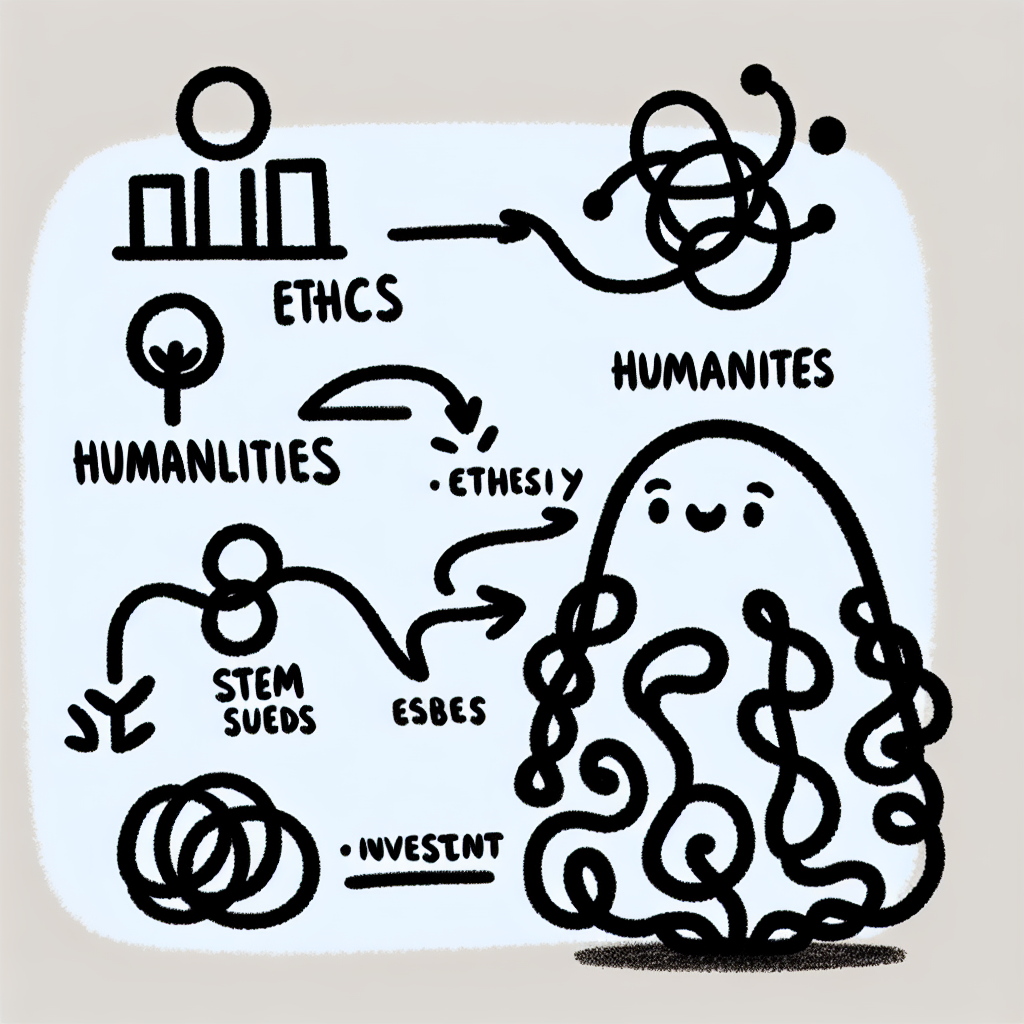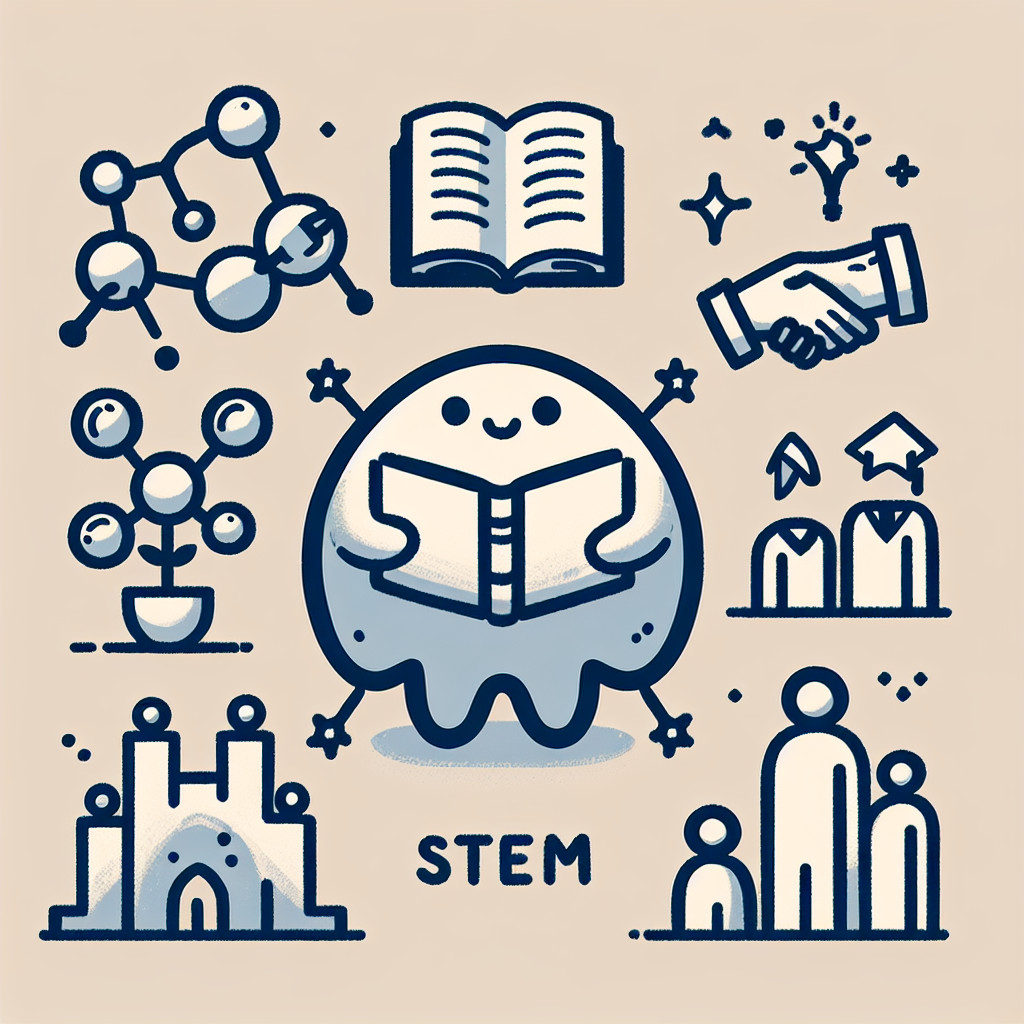Introduction
STEM stands for Science, Technology, Engineering, and Mathematics. These disciplines play a crucial role in driving innovation, solving complex global challenges, and supporting economic growth. As demand for skilled professionals in these fields continues to rise, selecting one of the best STEM programs colleges offer has become an important decision for aspiring students.
Choosing the right STEM program can significantly impact a student's future career path. A strong STEM education provides not only technical knowledge but also critical thinking, problem-solving, and collaboration skills that are highly valued in today’s job market. Programs with robust research opportunities, industry partnerships, and access to state-of-the-art facilities can give students a competitive edge.
Current trends in STEM education reflect the evolving landscape of technology and global needs. Interdisciplinary learning, increased focus on data science and artificial intelligence, and expanded efforts to promote diversity and inclusion are shaping how colleges design and deliver their STEM curricula. Online learning platforms and hybrid models are also becoming more prevalent, offering flexibility and accessibility to a wider range of students. As these trends continue, evaluating the best STEM programs colleges provide requires careful consideration of both academic quality and alignment with future industry demands.

How STEM Programs Are Ranked
When determining the best STEM programs colleges offer, ranking systems like U.S. News & World Report play a significant role. Their methodology is primarily based on peer assessment surveys sent to deans and senior faculty members at engineering and science schools. These experts rate programs based on their academic quality and reputation, which heavily influences the rankings (U.S. News).
In addition to peer assessments, U.S. News evaluates faculty resources and research output. This includes factors such as faculty credentials, the amount of externally funded research, and the number of doctoral degrees awarded. These indicators help assess the academic rigor and innovation capacity within each institution's STEM offerings.
However, there are important limitations and critiques of such ranking systems when identifying the best STEM programs colleges provide. One major concern is the overreliance on subjective peer assessments, which may reflect reputation rather than current program quality. Critics also point out the absence of metrics that measure inclusivity, such as diversity among students and faculty or support for underrepresented groups in STEM fields. Furthermore, rankings often fail to consider student outcomes like job placement rates or average starting salaries.
Another issue is the lack of adjustment for disparities in funding and access. Well-funded institutions have more resources to invest in research and facilities, which can skew rankings in their favor, leaving smaller or less wealthy colleges underrepresented despite delivering strong educational outcomes. These limitations suggest that while rankings can offer helpful insights, they should not be the sole factor in evaluating the best STEM programs colleges have to offer.

Key Factors That Define Top-Tier STEM Programs
When evaluating the best STEM programs colleges offer, several key factors distinguish top-tier institutions.
Academic Excellence
Leading STEM programs are defined by a rigorous, continuously updated curriculum that aligns with current scientific and technological advancements. These programs prioritize hands-on learning and critical thinking. Undergraduate research opportunities are a hallmark, allowing students to engage in real-world problem-solving early in their academic careers. Additionally, accreditation by recognized bodies such as ABET and consistent national recognition in rankings further underscore a program’s academic strength.
Faculty Quality and Research Activity
Top programs maintain a low faculty-to-student ratio to support personalized mentorship. Faculty members are not only experienced educators but also active researchers, often publishing in high-impact journals and securing competitive grants. A hallmark of the best STEM programs colleges provide is the integration of undergraduates in faculty-led research projects, giving students exposure to groundbreaking work while still completing their degrees.
Facilities and Technology
Modern STEM programs invest in state-of-the-art laboratories, computing systems, and simulation tools. Access to such resources supports advanced experimentation and learning. Interdisciplinary learning environments—such as innovation labs and maker spaces—encourage collaboration across fields like engineering, computer science, and biology, enhancing the educational experience.
Career Preparation and Industry Collaboration
The best STEM programs colleges offer provide strong career preparation through structured internship and co-op programs. These experiences often come through partnerships with major tech, engineering, and scientific firms. Programs with robust alumni networks and dedicated job placement services also give graduates a competitive edge in the job market, ensuring a seamless transition from academics to industry.

Inclusivity and Student Success in STEM
Inclusivity plays a critical role in determining which institutions can truly be ranked among the best STEM programs colleges offer. Programs that prioritize diversity, early support, and equitable outcomes are more likely to help underrepresented students succeed.
Impact of Diversity Initiatives
A case study of the University of Washington’s Pre-Major in Astronomy Program illustrates how targeted diversity initiatives can improve student outcomes. The program emphasized early research engagement and community-building, leading to higher GPAs and graduation rates among underrepresented students (Evaluation of a College Freshman Diversity Research Program). These findings highlight the value of structured, inclusive programming in fostering academic success.
Structural Barriers and Educational Debt
Despite efforts to promote inclusivity, systemic inequalities in STEM education persist. Research shows that race, gender, and socioeconomic status continue to shape educational outcomes in biology, chemistry, and physics. Collaborative learning alone has not closed these gaps, indicating a need for broader reform in STEM pedagogy (Society's Educational Debts in Biology, Chemistry, and Physics). For colleges to be considered among the best STEM programs, they must address these structural barriers directly.
Retention and Employment Outcomes
Retention of minority students in STEM fields is influenced by multiple factors, including mentorship, academic support, and access to practical experience. Undergraduate practicums have been shown to improve employment outcomes, yet disparities remain across demographic lines (Retention in STEM). Addressing these disparities is essential for any institution aiming to be recognized for the best STEM programs colleges can provide.
Early Academic Support and Major Flexibility
Strong support in introductory-level STEM courses is a key factor in long-term student success. Research also shows that allowing flexibility in major selection—paired with integrated academic advising and career counseling—can significantly improve graduation rates (Novel Association and Ranking Approach). These elements are vital components of inclusive STEM education and help distinguish the best STEM programs colleges offer today.

Best Practices for Evaluating and Choosing a STEM College
When exploring the best STEM programs colleges have to offer, it's essential to go beyond rankings and look at the qualitative and quantitative factors that define a program's true value. Careful evaluation can ensure that students find an environment where they can thrive academically and personally.
Questions to Ask During Campus Visits
Campus visits provide a chance to see how well a college supports STEM students in practice. Ask the following questions to get a clearer picture:
- What are the research opportunities for first- and second-year students? Early access to research can be a critical factor in building skills and gaining experience.
- How does the school support underrepresented students in STEM? Look for dedicated programs, mentorship, and community groups that foster inclusivity.
- What partnerships exist with local industries? Strong ties to nearby tech companies, laboratories, or hospitals can open doors for internships and future employment.
Metrics Beyond Rankings
While national rankings can be helpful, they often miss important context. Consider these additional data points:
- Graduation and retention rates: High retention and graduation rates often indicate a supportive academic environment.
- Student satisfaction and mental health resources: Access to counseling, student services, and a healthy campus atmosphere can significantly affect academic success.
- Real-world project experience and capstone design courses: Programs that emphasize hands-on work prepare students for industry demands and innovation.
Importance of Fit
No matter how prestigious a program may be, the best STEM programs colleges offer must also align with the student's personal and academic needs:
- Campus culture and student organizations in STEM: A vibrant STEM community can enhance learning through collaboration and extracurricular engagement.
- Availability of mentorship and peer support: Access to faculty mentors and peer networks helps students navigate academic challenges.
- Financial aid and affordability: A program must be financially viable. Evaluate the availability of scholarships, grants, and work-study options that reduce student debt.
By weighing these factors, students can identify the best STEM programs colleges offer that align with their goals, values, and long-term success.

Spotlight: Top Institutions Leading in STEM
When evaluating the best STEM programs colleges have to offer, several institutions consistently stand out for their academic rigor, cutting-edge research, and commitment to innovation. Here’s a comparative look at some top-tier STEM schools and what makes them leaders in the field.
Massachusetts Institute of Technology (MIT)
MIT remains a global leader in STEM education, particularly known for its pioneering work in artificial intelligence and robotics. The Computer Science and Artificial Intelligence Laboratory (CSAIL) is at the forefront of AI research, attracting top talent worldwide.
Stanford University
Stanford combines a strong engineering curriculum with close ties to Silicon Valley, making it a hub for innovation in areas like quantum computing and biotechnology. The Stanford Quantum Initiative is a standout, driving advancements in quantum algorithms and hardware.
California Institute of Technology (Caltech)
Caltech is renowned for its strength in physics, engineering, and biological sciences. Its small size allows for close faculty-student collaboration, and programs in space science and bioengineering are particularly distinguished.
Georgia Institute of Technology
Georgia Tech is notable not only for its high-ranking engineering programs but also for its efforts to improve diversity in STEM. Initiatives like the Center for Student Diversity and Inclusion support underrepresented students in science and technology fields.
University of California, Berkeley
UC Berkeley excels in computer science and environmental engineering. The university is also known for its inclusive environment, with programs like the Berkeley Science Network aimed at increasing minority representation in STEM disciplines.
Carnegie Mellon University
Carnegie Mellon is a leader in robotics and computer science. The School of Computer Science has launched interdisciplinary programs that integrate AI, machine learning, and ethics, preparing students for real-world challenges.
These institutions exemplify the best STEM programs colleges can offer, not just through academic excellence but also by embracing emerging disciplines and fostering inclusive academic communities.

The Future of STEM Education
Emerging Trends
Colleges offering the best STEM programs are evolving to meet the demands of a rapidly changing world. One significant trend is the integration of ethics and humanities into STEM curricula. Institutions are recognizing the importance of developing socially conscious scientists and engineers who can consider the broader implications of their work.
Another development is the rise of interdisciplinary majors such as data science, environmental engineering, and bioinformatics. These programs combine skills and knowledge from multiple fields, preparing students for complex, real-world challenges that don't fall neatly within traditional academic boundaries.
In addition, the growth of online and hybrid STEM degree programs is expanding access to high-quality education. These flexible formats allow students from diverse backgrounds and locations to benefit from the best STEM programs colleges have to offer, without being limited by geography.
Policy and Funding Outlook
Federal and private investment in STEM education continues to increase, driven by the need for a skilled workforce in technology and innovation. Government initiatives and grants are supporting research, infrastructure, and scholarships to sustain and grow STEM programs.
There is also a concerted push to strengthen the K–12 STEM pipeline, ensuring younger students are prepared for college-level STEM coursework. Programs that introduce STEM early and provide mentorship and resources are critical to this effort.
Community colleges are playing a growing role as entry points into STEM education. Many of the best STEM programs colleges now offer clear transfer pathways from community colleges, making it easier for students to advance their education and access top-tier programs.

Conclusion
Choosing among the best STEM programs colleges offer requires more than just looking at rankings. Key criteria such as faculty expertise, research opportunities, facilities, industry partnerships, and student support services should guide your evaluation. While prestigious schools may offer valuable resources and name recognition, it's essential to find a program that aligns with your personal learning style, career goals, and values.
Inclusivity, campus culture, and support for underrepresented groups are also important factors when determining the best STEM programs colleges provide. A program that fosters a welcoming and diverse environment can significantly impact your academic success and overall experience.
Finally, think beyond immediate prestige. Consider long-term outcomes like job placement rates, alumni networks, and graduate school acceptance. The best STEM programs colleges present are those that not only equip you with technical skills but also position you for sustained success in your chosen field.














